To Kill A Mockingbird Drawing
"Any claims for To Kill a Mockingbird as a book that changed history could not have seemed more far-fetched one winter night in 1958, as Nelle Harper Lee huddled in her outer-borough New York apartment trying to finesse her unruly, episodic manuscript into some semblance of a cohesive novel. All but drowning in multiple drafts of the same material, Lee suddenly threw open a window and scattered five years of work onto the dirty snow below ." (from The Big Read)
To Kill a Mockingbird
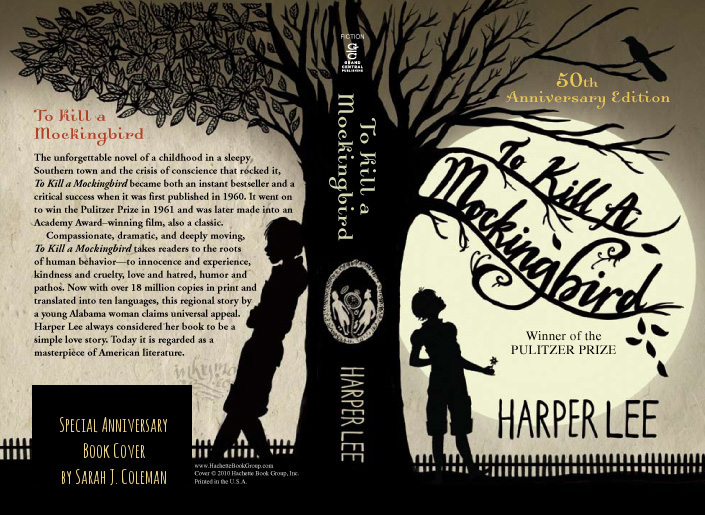
Cover by Sarah J. Coleman
Did you know Harper Lee's original title for the book was Go Set a Watchman ?
Yep. Not sure I'd have been tempted to read that one based on title alone. How about you?
Unlike my former students, and most writers I know, I never read To Kill a Mockingbird until I was thirty-years-old. That's right, THIRTY! I regret that.
Of course, I've read the novel over two-dozen times by now, so I guess I've made up for it. But missing out on that remarkable story and the wonderful writing all those years, I wonder sometimes what sort of impact that book might have had on me back when I was a boy.
Without question, Harper Lee's novel is my favorite. It's not even close.
Books by R.A. Salvatore and J.R.R. Tolkien helped me realize that I could sit still long enough to read and that doing so was worthwhile. But Lee's book settled into my soul. It spoke to me on every level: it had mystery, it had action, it had drama, it had a battle between good and evil, it had misfit characters, it had hope and love, prejudice and loss.
More than any other novel, To Kill a Mockingbird epitomizes what I want to do as a writer.
I don't presume to be the next Harper Lee. I'm not talking about that. I'm talking about wanting to write stories that affect people on multiple levels. Stories that climb right down into their hearts and into their bones and stay with them for a long time. Stories that in some way change them for the better . I want to create characters readers love and hate and feel like they know.
More than anything, that's what I want to do!

Cover by Marilyn Foehrenbach
Here are a few of my favorite quotes from the novel:
"Atticus, he was real nice."
"Most people are, Scout, when you finally see them."
"Mockingbirds don't do one thing except make music for us to enjoy. They don't eat up people's gardens, don't nest in corn cribs, they don't do one thing but sing their hearts out for us. That's why it's a sin to kill a mockingbird."
"You never really understand a person until you consider things from his point of view . . . Until you climb inside of his skin and walk around in it."
"Simply because we were licked a hundred years before we started is no reason for us not to try to win."
"As a child, Harper Lee was an unruly tomboy. She fought on the playground. She talked back to teachers. She was bored with school and resisted any sort of conformity."
Remind you of anyone?
You might already know that Harper Lee's childhood friend was Truman Capote and that her father was a lawyer. You might also have read, as I did, that her father unsuccessfully defended two men who were charged with murder. Around that same time, the Scottsboro Boys trials were going on. Apparently these factors influenced Lee when it came to writing her novel.
I love Mockingbird for it's themes, for its characters, and for the beauty of Lee's prose.
One of the things I admire most about her, not just as a writer, but as a person, is her profound sensitivity to others which she used to create such complex characters. By the end of the novel, each one of her characters has a distinct voice, personality, and impact on the story and on the reader. At least they did (and still do) on this reader.
You feel like you just spent time with friends and neighbors, with people you truly know.
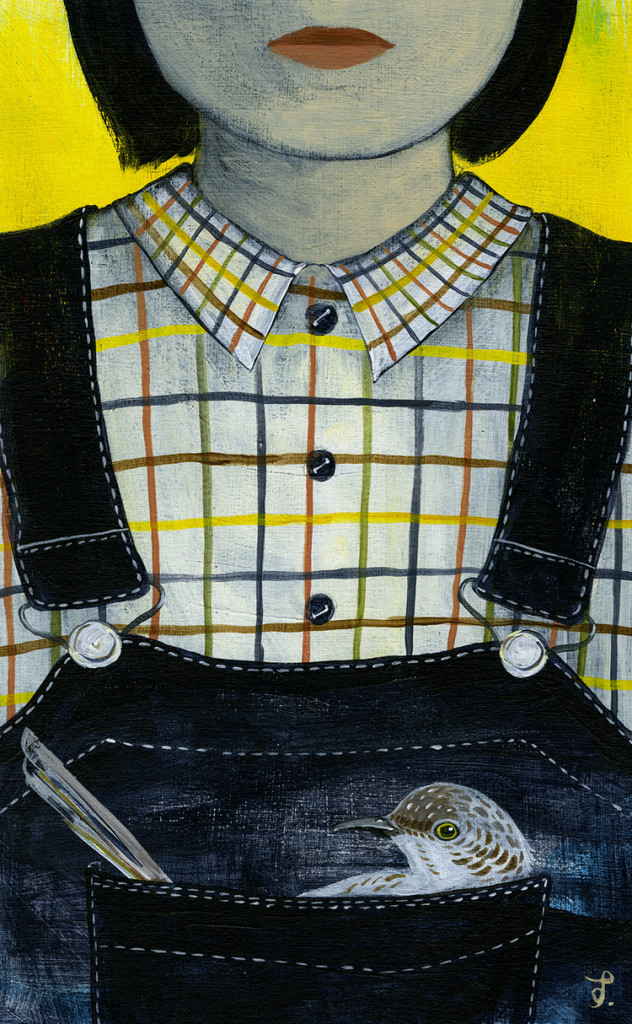
Alternative Cover by Suharu Ogawa
I love that she gave us Boo Radley and Tom Robinson and Atticus Finch and Scout .
She gave us an enigma. A ghost of a man who is more whispered myth and small town legend than flesh and blood. Perceived by many to be an abomination, untruths perpetuated through rumor and gossip, yet in the end he's a man of compassion and quiet tenderness.
Lee gave us a symbol for injustice: a good man who is not only wrongly accused, but convicted before he ever goes to trial. A man who is, himself, represented by the mockingbird. She gave us another good man, one who believes in doing what is right regardless of the odds and potential consequences.
And she gave us a young girl who is strong and spunky, yet sensitive enough to see things for what they are (at least in retrospect, though she could sense the wrong long before she understood).
One of the very first things I ever wrote (once I'd decided I wanted to be a writer) was an adapted screenplay for Lee's novel titled Boo.
Bet you can guess who the protagonist was.
I sent a typed letter to Harper Lee and she actually responded, her brilliant scrawl stretched across the back of my original letter. Talk about awestruck. I still get chills thinking about it.
Here's this amazing writer from a small town who, in many ways changed the world by sharing her gift, by sharing her art. By touching people hearts, and by making them think. And she took the time to respond to my letter. I was (and am) humbled by that, and inspired.
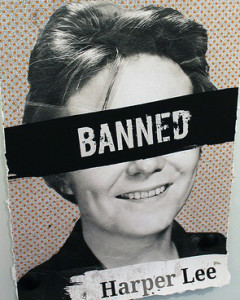
Harper Lee by Robert E. Kennedy Library
Here are a few quotes attributed to Harper Lee:
"There are people who write, but I think they're quite different from people who must write."
"Any writer worth his salt writes to please himself. He writes not to communicate with other people, but to communicate more assuredly with himself. It's a self-exploratory operation that is endless. An exorcism of not necessarily his demon, but of his divine discontent."
"You see, I never expected any sort of success with Mockingbird . . . I hoped for a little but I got rather a whole lot, and in some ways this was just about as frightening as the quick, merciful death I'd expected."
Edgar Degas states that "Art is not what you see, but what you make others see."
To me, To Kill a Mockingbird is a work of art! One that deserves to be framed and exhibited and enjoyed, but also one that needs to be explored and plumbed and devoured. Each time I read the book, I'm made to see the world and myself differently.
Lee's novel appears on several lists as one of the 100 Best Novels of the 20th Century. It is one of the most commonly read books every year in American high schools, and (as suggested by the image above left) it is also one of the most frequently challenged and most banned books each year.
Mockingbird has had an impact on the lives of writers, actors, and political figures; has appeared as a school subject for students in other novels, on TV shows, and in popular movies; while a few of its characters have ended up in songs. Celebrities (and others) have even named their children and their pets after the characters.

What a terrible thing it would have been if she hadn't rescued her manuscript from the snow that winter night.
Thank you, Harper Lee. I, for one, am indebted to you. For giving me Scout, and Jem, and Atticus, yes, but also for giving me Dill, and Tom Robinson, and Boo. For giving me the Mockingbird. For giving me a piece of you.
The Book Covers
I reached out to a few very talented artists who've sent me the special book covers they've designed for Lee's novel. I think you'll agree they are very cool birds!
MARILYN FOEHRENBACH
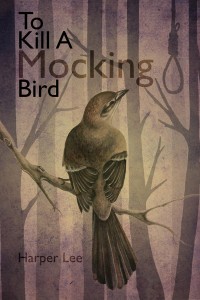
by Marilyn Foehrenbach
Marilyn Foehrenbach always been interested in art. As a child, she would "throw tantrums" because "my drawings didn't look exactly like what I was copying (photos of my cat mostly)." Yet it wasn't until she was a student at Moore College of Art and Design that she became interested in art as an intellectual subject. "Discovering art as an anthropological learning tool changed the way I thought about how I wanted to make art, and how I look at the art of others."
You'd be surprised where a love of art might take you.
Marilyn did an internship in scientific illustration at the United States Department of Agriculture Systematic Entomology Lab and another internship at the National Museum of Natural History. While with the USDA, she worked on a catalog of beetles and is interested in creating a field guide to local plants and animals. She's also inspired by music and would like to design music posters for indie bands.
When asked what she is creating art for, Marilyn replied: "Where I lack in words, I make up for in visual communication. It's always been something I felt happy and comfortable doing. I'm not sure I made a conscious decision to be an illustrator, it's just always been part of my life."
Technique : For the Mockingbird cover, Marilyn used a combination of digital and traditional media, starting with a pencil drawing of the mockingbird and branch, then she did some color work with watercolor, then took it into Photoshop. The background is entirely Photoshop. She then overlaid the image with scanned in watercolor swatches and paper textures.
Click on the book cover to visit Marilyn's website, or you can also find her work on Pinterest, or click here to find her on Facebook. She has worked on several awesome book covers, like Moby Dick, Frankenstein, and The Gold Bug, and others which you can find here.
SARAH J. COLEMAN
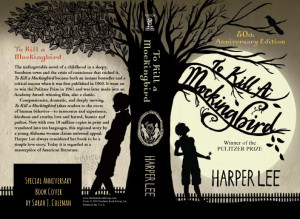
by Sarah J. Coleman
Across the pond – that's what they called the Atlantic Ocean when I went to England two decades ago – you'll find an artist who goes by the moniker Inkymole, though her real name is Sarah J. Coleman. Apart from being a ballerina, Sarah has never wanted to do anything but make art (drawing or writing).
As an illustrator, Sarah's job requires her, more or less, to draw what she's asked to draw, but for her own personal projects she gravitates toward the written or spoken word. "I think because I had a prodigious reading age as a child," she says, "and read loads of books to the point where I had to be dragged away from them and into the garden, that's an interest that's still very much alive."
Spend a little time exploring her website and you'll discover the myriad ways she blends drawing and writing together, be it through the many illustrations created with words (the words becoming part of the art) or the wonderful book covers she's worked on, like Aristotle and Dante Discover the Secrets of the Universe by Benjamin Alire Saenz, books by Neil Gaiman and other remarkable writers, like Harper Lee.
I'm especially drawn to delicacy and playfulness of her amazing covers. The combination of lacy, intricate etching and calligraphy and the way the words give shape to the art, the way the letters and words themselves are small pieces of art. There's such a wonderful sense of flow and, at times, magic.
Sarah's done work for everyone from MACY'S to Crayola to The Wall Street Journal, from Simon & Schuster and Walker Books to Tiffany & Co. and Cadbury. There's one company, however, Sarah would love to work for. "I quite fancy a job for Wilkinson's. It's a famous high street low-price hardware/general store and it's legendary in the UK . . . Everyone I know would get to see and enjoy my work, instead of it being hidden in a book or annual report or pharmaceutical ad. And that would please me a lot!"
Technique: For the Mockingbird cover, Sarah used ink on paper, assorted pens on standard A3 cartridge, and a touch of color.
Click on the book cover to visit Sarah's website, or click here to find her on Facebook or on Twitter. You can contact her through her agent by clicking here or through Factoryroad.
SUHARU OGAWA
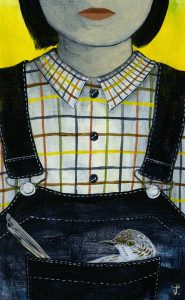
by Suharu Ogawa
Winner of illustration competitions held by 3X3 Magazine (which is where I first came across her work) and CMYK Magazine, Suharu Ogawa is a Toronto-based illustrator originally from Japan.
Suharu (pronounced Su-ha-ru), grew up drawing and, by her own admission, was "one of those kids who always stayed after school doodling some random creatures on the blackboard with chalk." As a matter of fact, her first advertising gig was "creating a a graphite drawing of an ugly dress and phrase 'Big sale for a million yen'" that can still be found on a brick wall outside her parents' house.
Suharu has always enjoyed the collaborative environment of illustration, whether it was creating work for a class newspaper, yearbook, pseudo-advertisements for fun, or her current projects for clients in the U.S., Belgium, Japan, and Canada.
Currently in her final year at Ontario College of Art and Design (OCADU, also known as "Canada's University of the Imagination"), Suharu is finishing up her thesis in Illustration, but has already studied "cultural anthropology and art history, as well as worked as a resource librarian at a university in California before moving to Canada."
Actively involved in numerous exhibitions based in the U.S. and Canada, Suharu enjoys "turning smart ideas into illustrations with a twist of humour and a touch of wit."
I'm especially drawn to her choice of colors and the whimsical element of her work. Given my affinity for misfits, I suppose it's no wonder I was attracted by her work. Suharu is a lefty after all. That's right, as in left-handed, which apparently got her kicked out of calligraphy class while in kindergarten. Yep. She wouldn't convert and got the boot. And I'm glad she was brave enough to be true to herself. Despite her love of drawing, it wasn't until later that Suharu realized illustrating was the one thing she wanted to do and now she's using her left hand and following her passion.
Technique: For her Mockingbird cover, Suharu used acrylic on panel.
Click on the book cover to visit Suharu's website, or click here to find her on Facebook or on Twitter. You can find more of her work at her older website by clicking here.
Harper Lee Banned photo above by Robert E. Kennedy Library at Cal Ploy is used and has been altered
from its original form (including the title) as per Creative Commons License on Flickr.
"If you were born without wings, do nothing to prevent them from growing." - Coco Chanel
To Kill A Mockingbird Drawing
Source: http://othercoolbirds.com/to-kill-a-mockingbird/
Posted by: kellyficket.blogspot.com

0 Response to "To Kill A Mockingbird Drawing"
Post a Comment